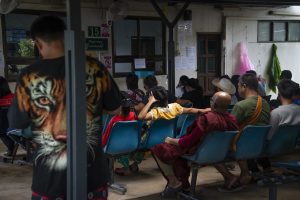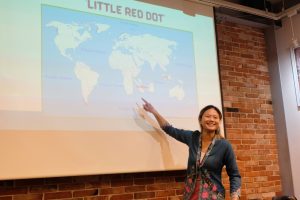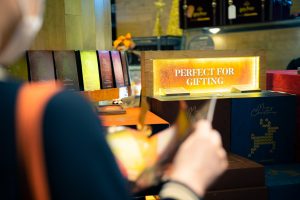Ever hear the tale from Aesop’s Fables about the Country Mouse and City Mouse?
If not, let me summarise it for you:
One day, a proud City Mouse pays a visit to his cousin Country Mouse in the countryside, where City Mouse is treated to a simple country meal, one which does not suit his tastes at all.
“This is no way for a mouse to live!” exclaims City Mouse. “Come to the city with me, and experience ‘the fine life.’”
So off the Country Mouse goes with his cousin to the city, where they dine at Les Amis and gorge on other expensive (but shiok) cuisines. Their feast, however, is interrupted by the sudden appearance of the Cat, which forces the two mice to scurry back to the safety of City Mouse’s 99-year lease mouse-hole.
At the end of the story, Country Mouse decides to return to his simple life in the country.
Literary analysis isn’t my strong suit, but I think the moral of this story is that there are certain trade-offs we have to make when we live in any society.
If we want to lead opulent lives like City Mouse, then living in fear of the Cat and the Cat’s rules is just the necessary cost of life. If, like the Country Mouse, we yearn for freedom outside the system, then it would be unrealistic to expect subsidised mouse-holes, covered walkways, and SMRT trains that rarely ever break down.
At this point, I know what you’re thinking, because I was wondering the exact same thing:
Where do the country mice go in Singapore?
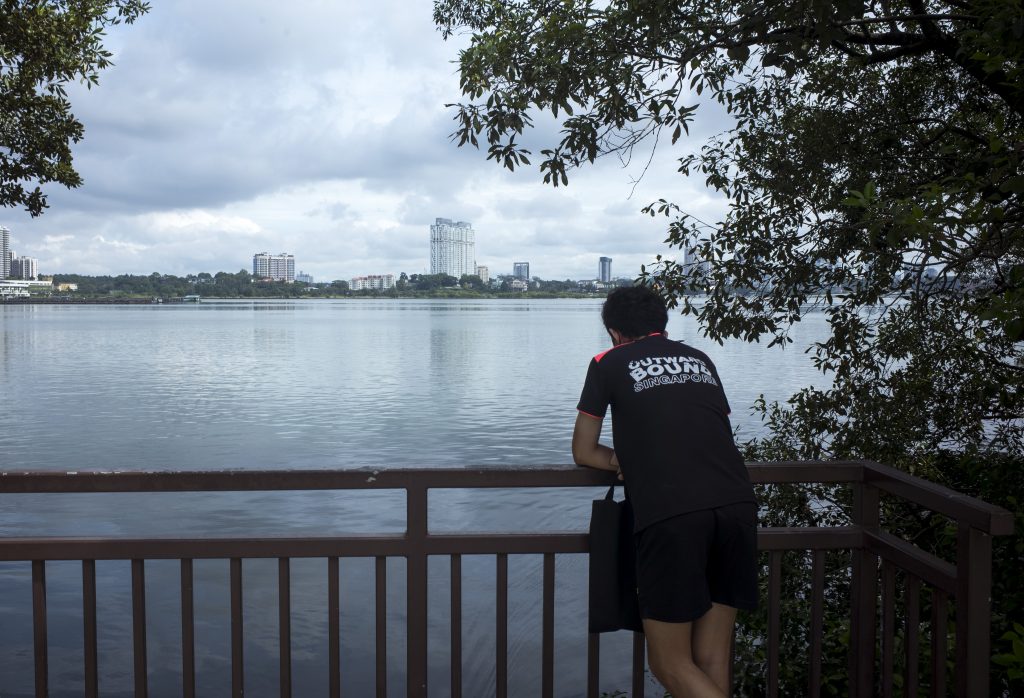
Boarding the Kranji Express Shuttle
I’m standing outside Kranji MRT station, waiting for the 1:00 PM Kranji Express Shuttle. The adult fare is $3, and for children and the elderly, it’s $1, which you can use for the entire day.
This may sound like a bargain, but if you’re travelling with young kids or the elderly, I strongly recommend paying the extra gas money to drive, or renting a car for the day—if only to preserve your sanity.
Because the ‘Express’ Shuttle means the exact opposite of what the name suggests. After 9:30 AM, it runs every 1.5 hours. The entire route, in both directions, is operated by one rickety mini-bus, driven by one permanently disgruntled uncle in his mid-to-late 60s.
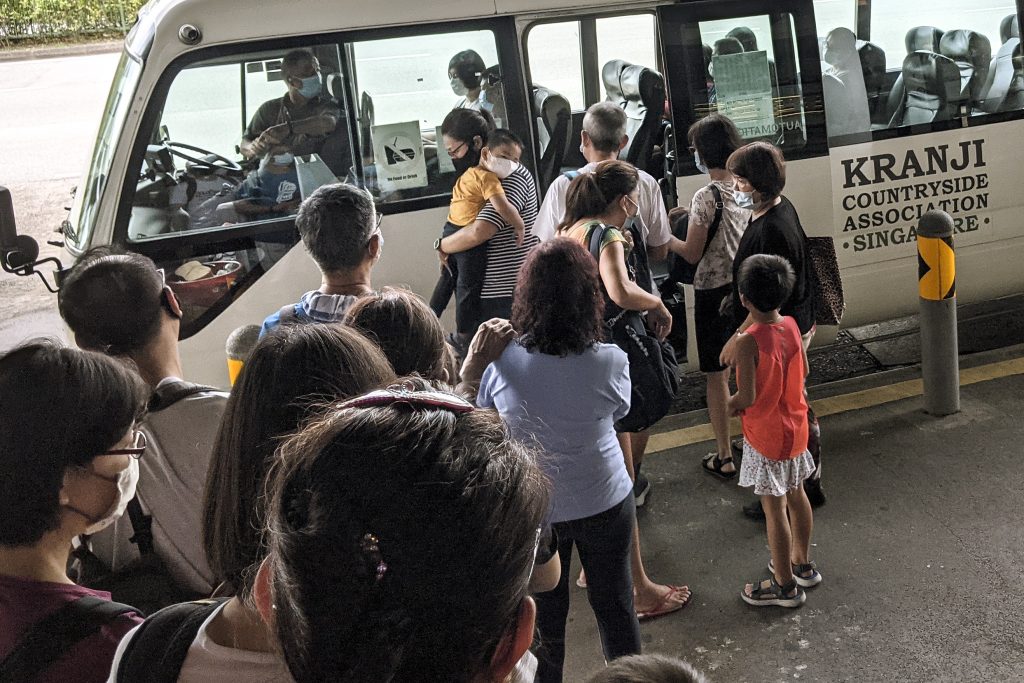
During work hours, uncle’s blood pressure must be clearing daily records because of the limited seats and standing room on his shuttle. Like Meryl Streep in the movie Sophie’s Choice, he has the unenviable task of deciding who lives and who dies.
“Where are you going!?” he yells at each passenger before they board at each stop. Once the shuttle fills up, as it does that Wednesday, then passengers are shit out of luck.
To make matters worse, once you’re in Kranji / Lim Chu Kang proper, the Express Shuttle is pretty much your only option. Few Grab drivers are willing to drive so far out into the boonies to pick up your country ass.
Pro tip: For the masochistic souls who, after reading this, still want to try their luck with the Kranji Shuttle, the optimum route to take is to travel from Kranji MRT station to the furthest point on your itinerary, which for most domestic tourists is Bollywood Veggies.
From there, you can slowly make your way back to civilization, increasing the odds that Grab’s algorithm will shine upon you once more.
This is perhaps the first trade-off to going “off the grid” in Singapore. You sacrifice the convenience that most Singaporeans take for granted in the city. And judging by the looks on the faces of locals, as our packed-to-capacity Shuttle leaves them behind in the dust, this is simply too high a price to pay.
The Gardens at Bollywood Veggies
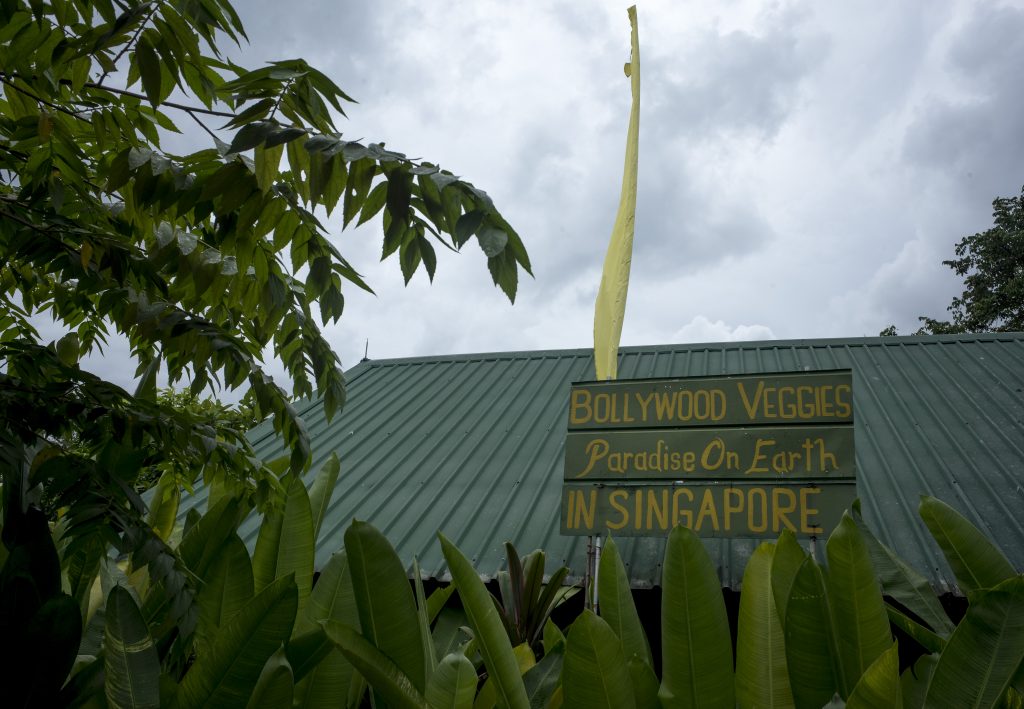
All tables are occupied when I arrive at Bollywood Veggies. So the staff take down my name and number, and I pass the time walking the surrounding farm and gardens.
Bollywood Veggies embodies a unique spirit and sass that’s unlike any other place in Singapore. The whole place exudes a hippie vibe. Think John Lennon’s ‘imagine there’s no country or possessions’-type of peace and free love. There’s also a nude sanctuary within the garden, where visitors are allowed to roam naked, although I’m skeptical that anyone actually partakes.
Isn’t this illegal here? Aren’t Singaporeans not even allowed to be naked inside their own homes?
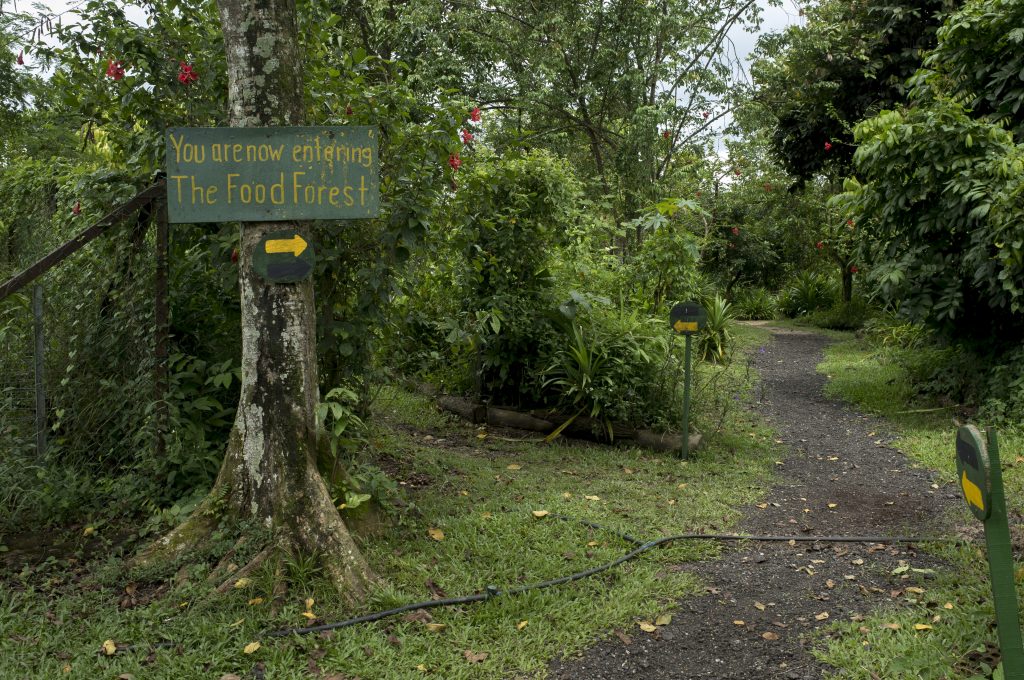
A sudden afternoon downpour forces me to seek shelter under a pavilion, as I enjoy the peace and tranquility of the estate. The only thing that breaks the sound of birds and insects is the occasional roar of RSAF fighter jets streaking across the sky on their aerial exercises. The jet engines pummel the air into submission, scaring the birds into temporary silence.
Amidst the silence, my phone rings. My table for one at Poison Ivy Bistro is ready.
Dining at Poison Ivy Bistro
Service at Poison Ivy Bistro is an exercise in supreme patience and tolerance.
Even the name itself, ‘poison ivy,’ a non-native plant whose oily resin famously causes painful and itchy rashes, is as un-Singaporean as it gets.
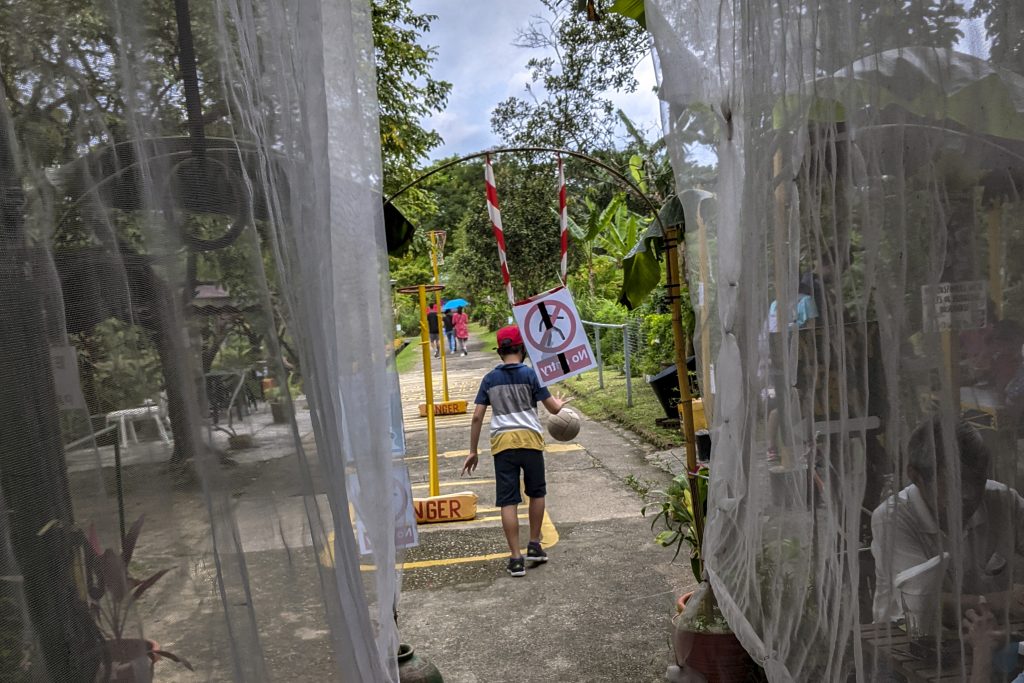
When I arrive, the restaurant is jam-packed. Once seated at my table, it takes me a half-hour to make eye contact with a staff member to take my order. Oh well, I’m in no hurry. I have nothing left to do for the remainder of the day except to check-in to my resort at 3 PM.
When they finally get around to my table, the server is friendly and apologetic. I order a small nasi lemak platter ($12), a side of turmeric cabbage with mushroom ($6) and a fresh lime juice ($2).

Judging by the helpless/embarrassed/frustrated reactions of some of the neighbouring tables and the Google reviews online, however, some Singaporean customers seem to have taken this laissez-faire attitude towards service as a personal affront.
But Fullerton Hotel this is not. Nor did the Bistro advertise itself as being anything other than wholly itself.
In due time, my food arrives. Everything on the plate is delicious except for the most Instagrammable part of my meal: the blue butterfly pea rice, which is mushy and overcooked. Such is the value of life lived for the ‘Gram.
I’m in for a final surprise when I get up to pay for the reasonable bill for one ($22), as the cashier randomly gifts me a free 2021 diary and calendar.
I love this place.
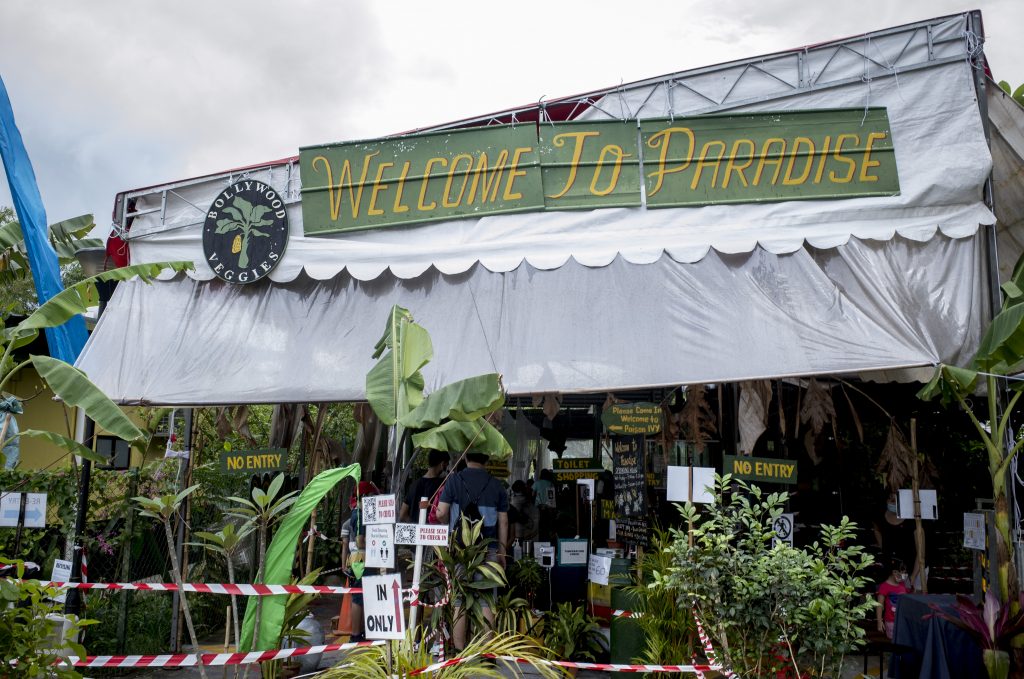
Twilight Zone at Gallop Kranji Farm Resort
The only theme to Gallop Kranji Farm Resort seems to be a lack of any unifying theme.
Perhaps this is part of its odd charm: within the compound itself there is a shrimp fishing area, an exotic bird sanctuary, a birds nest museum, and a pet crematorium.
Even the smell in the air is a mixed bag: there’s the smell of grilled meat and BBQ from the predominantly Malay stalls at the resort, mixed with the scent of manure and compost wafting in from neighbouring farms.
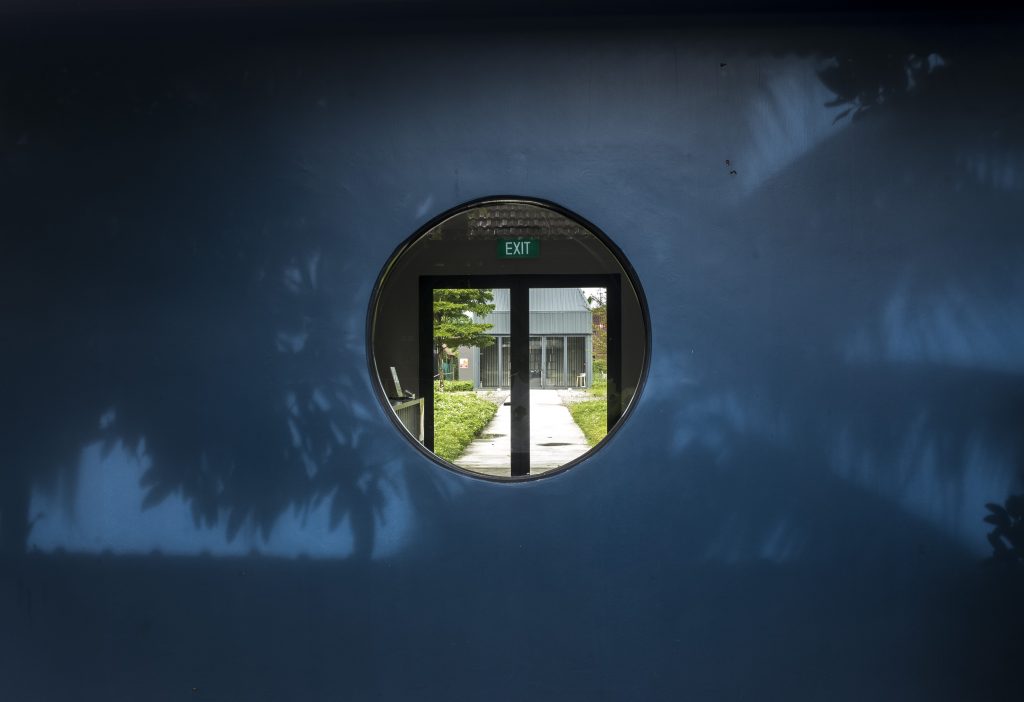
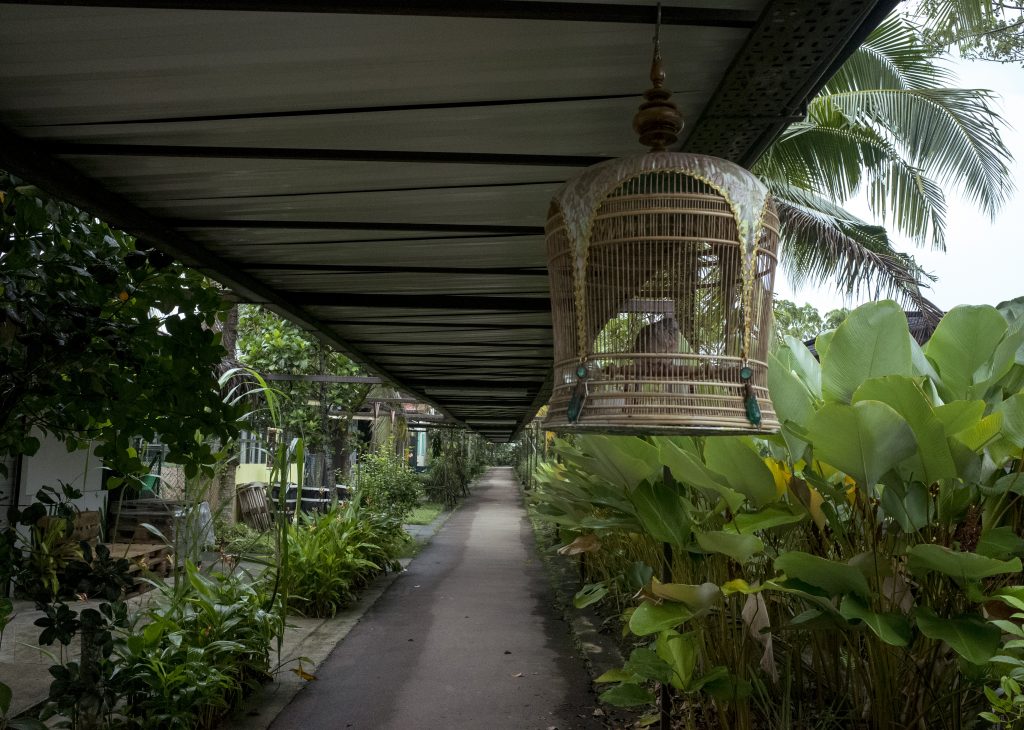
The guests staying the night consist almost exclusively of Malay and expat families. I have no idea why. After sundown, and still full from my late lunch, I buy a brownie with ice cream from a vendor, and pass a comfortable evening reading my Kindle in my villa, a standard two-person unit that costs $175 per night—$75 if you redeem your SingapoRediscovers voucher.
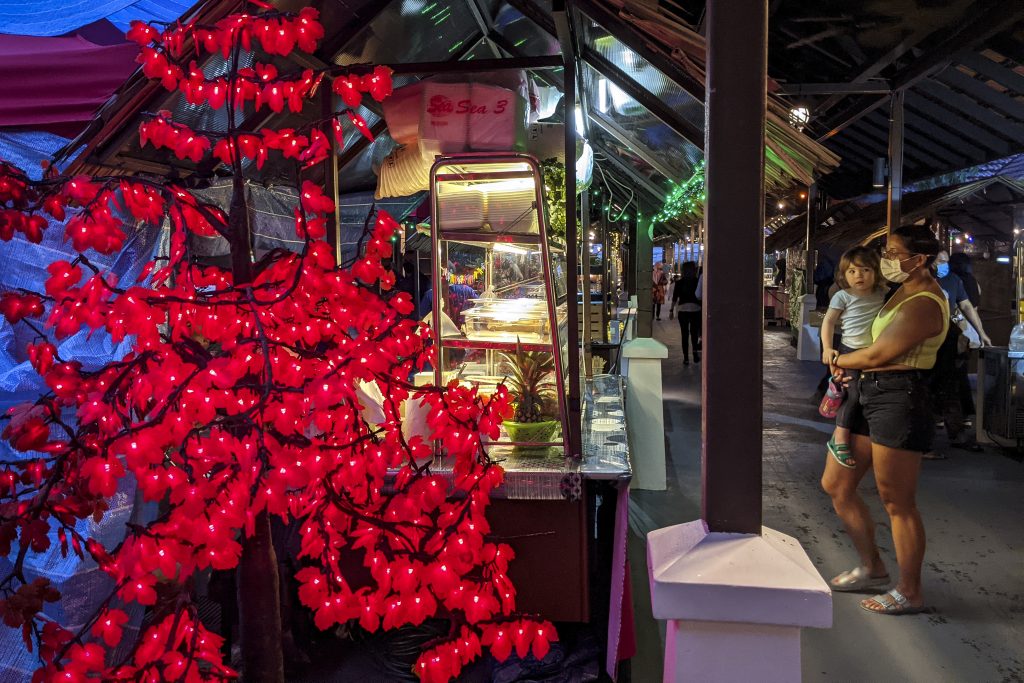
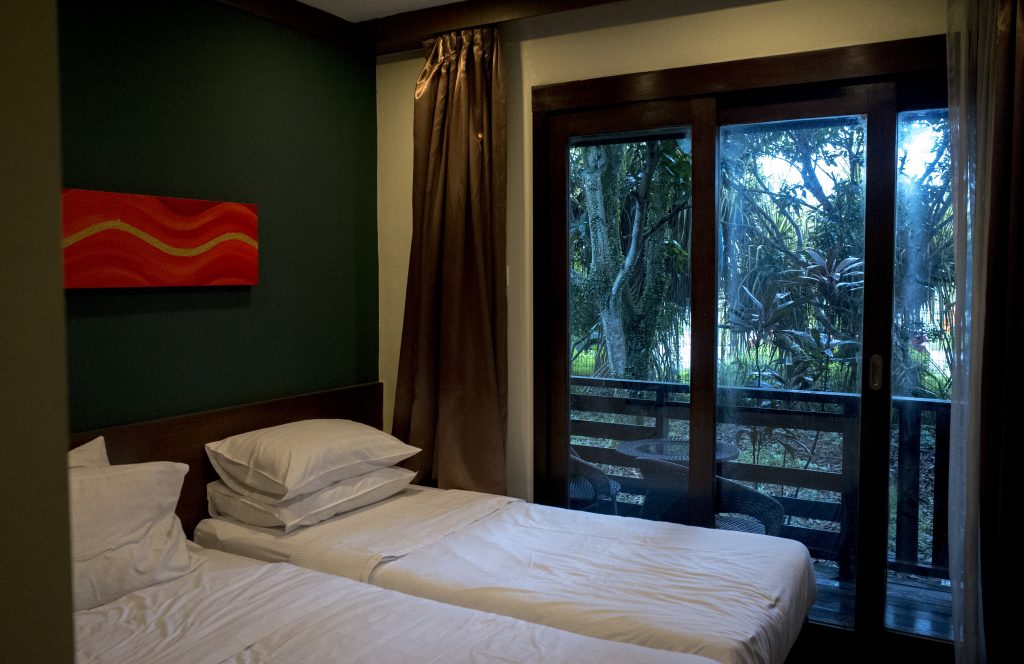
Check-in had also been a surreal experience. When I asked the girl at the front desk about the Sungei Buloh Wetland Reserve, I was surprised to learn that she had never visited before, and could not provide me with any information on it.
Oh never mind, this is Singapore. A weak cell service and Google will get me all the information I need.
Perhaps eager to get rid of me and my pestering questions, the girl had dutifully collected my $100 security deposit and assured me that the front desk would be open at 9:30 am sharp the next morning, giving me enough time to check-out, collect my deposit, and make the Kranji Express Shuttle departure to Sungei Buloh Wetland Reserve.
Expectations on Punctuality and Service
The front desk is not open when I approach the front-desk building at 9:30 AM. A maintenance crew is also waiting outside, along with a Singaporean mixed race family of four with young children.
The maintenance crew look bored. They wait around their parked van as they horse around with a hungry black cat. The family with young children are walking around the compound with confused looks on their faces. The wife is visibly annoyed. None of the restaurants are open.
“Where do we get breakfast?” she asks out loud.
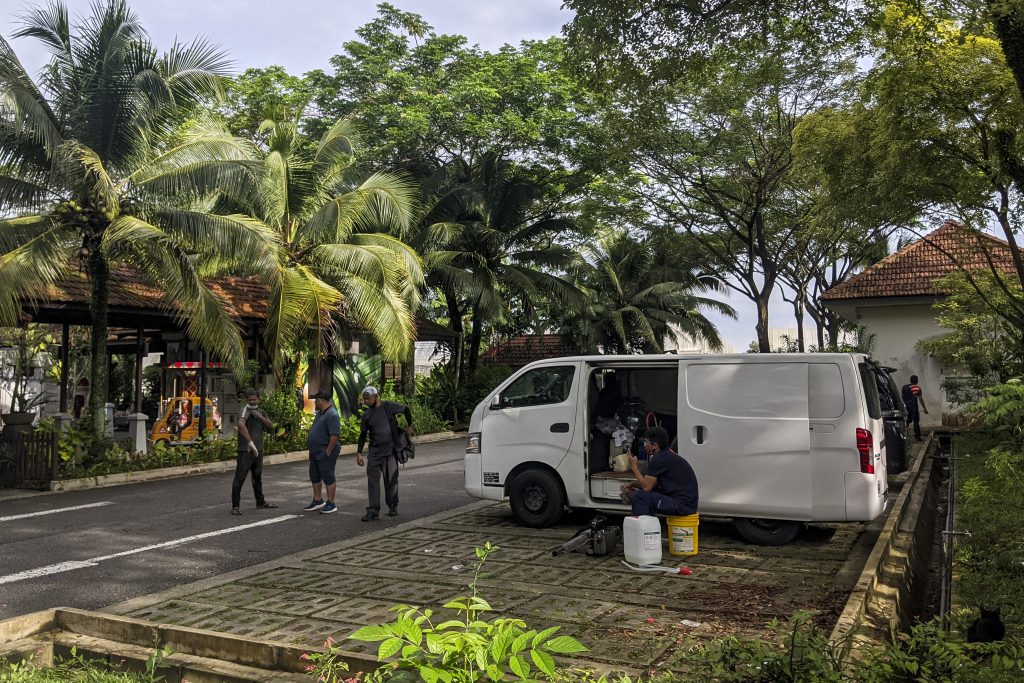
Well past ten o’clock, a young kid arrives in a car and saunters up to the building. By the time he completes my check-out and hands me back my deposit, I have missed the Kranji Express Shuttle.
I’m now faced with one of two options: wait an hour and a half for the next shuttle or walk across Kranji to the Reserve.
I decide to walk.
The Long March Across Kranji
It is not technically accurate to call Kranji / Lim Chu Kang the countryside of Singapore, though the area does boast over 100 farms, around 20 of which are open to the public for tours and activities (call and book ahead). Kranji is, in fact, classified as just another Singaporean suburb. Unlike other suburbs though, there are no towering HDB blocks (yet). Instead, the farms exist alongside industrial estates, construction sites, and business parks, and all the trucks and human activity that comes with it.
I’m about to find this out the hard way as I set off on my trek along Neo Tiew Road.
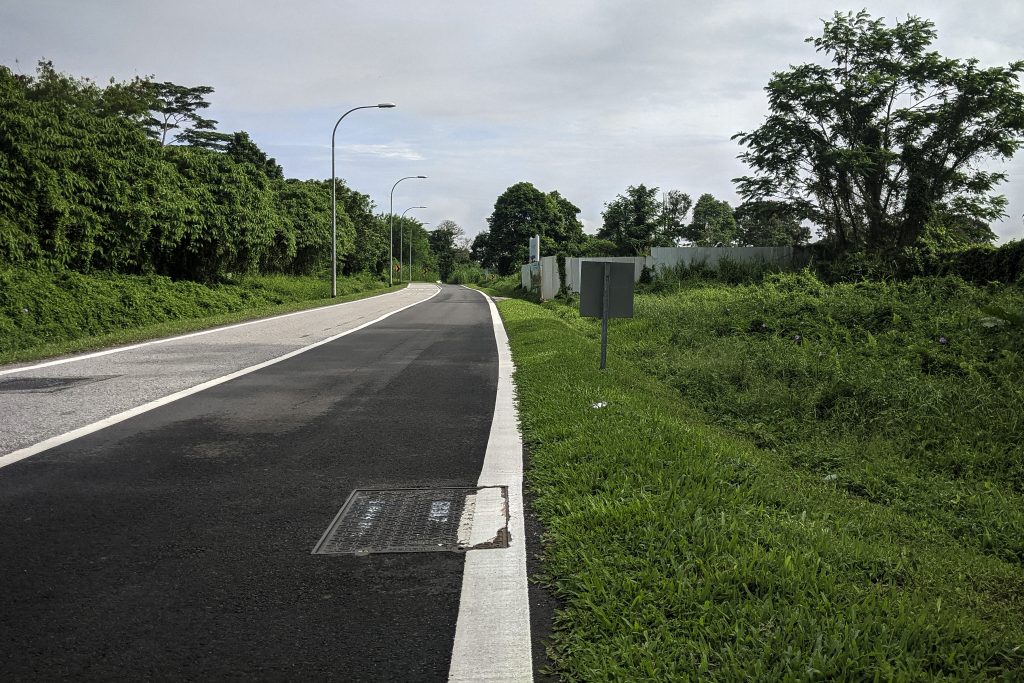


Half an hour into my walk, the midday sun is now shining down on me in full force. The heat and humidity is overwhelming, putting me in an irritable mood.
Along Neo Tiew Road, there is no pedestrian path, so I’m walking against barrelling construction trucks, some going at full speed around winding corners, causing me to flatten myself against the underbrush to avoid getting hit.
What’s worse, there’s not a single sliver of shade along this entire road, let alone a covered walkway.
Along the way, I only encounter other expats and the occasional Singaporean biker, two groups of people who are just crazy enough to take this route.
Sweaty and tired, I reached Sungei Buloh Wetland Reserve in under an hour.
What’s Acceptable Risk in Singapore?
After my harrowing walk, the entrance to Sungei Buloh Wetland Reserve does not spark joy.
The path leading up to Sungei Buloh bears all the hallmarks of the Singapore Zoo rather than a nature reserve. Not that there’s anything wrong with the Zoo. I’ve visited, and it’s quite enjoyable. The problem is that I was expecting something different. I’d wanted to be a participant in Nature rather than just a spectator of it.
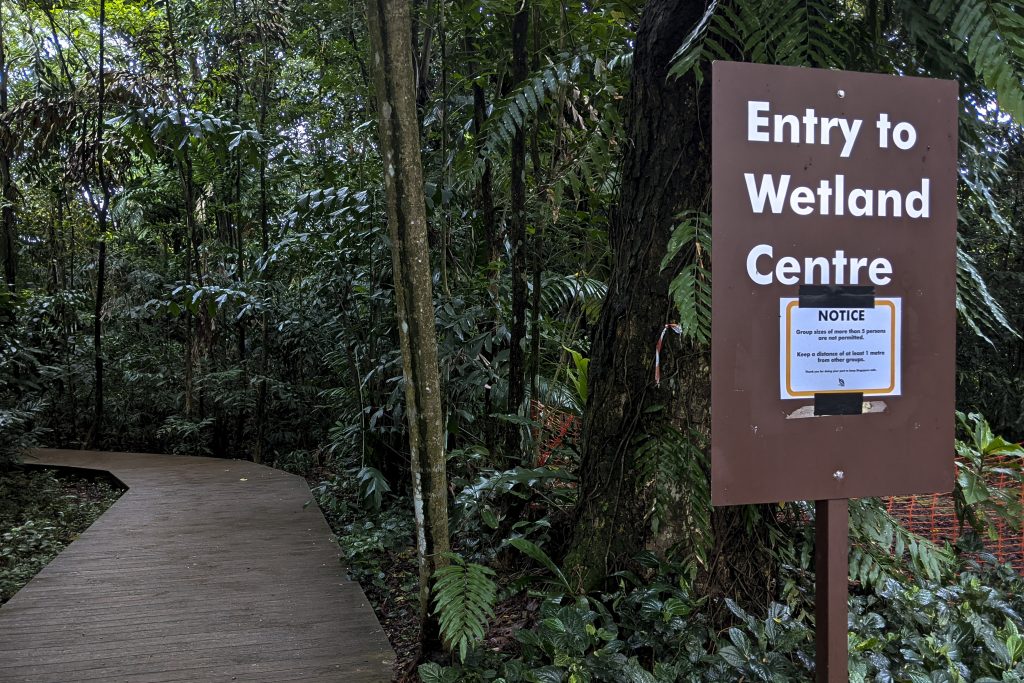
The ‘trail’, if you can call it that, is well marked. Perhaps overly so. At certain points, painted yellow lines mark the edges of 20-cm-high wooden walkways. There are shaded rest stops spaced exactly 100 meters apart, where ‘trekkers’ can take a rest. Every 200-300 meters or so, there’s a sign warning of crocodiles along the water. Just in case the first sign didn’t set off any warning bells.
In summary, the trail is a quintessentially Singaporean experience. In fact, there’s a genre of local photography that can consist entirely of pictures of nondescript places in Singapore alongside signs telling you what you’re not allowed to do there.
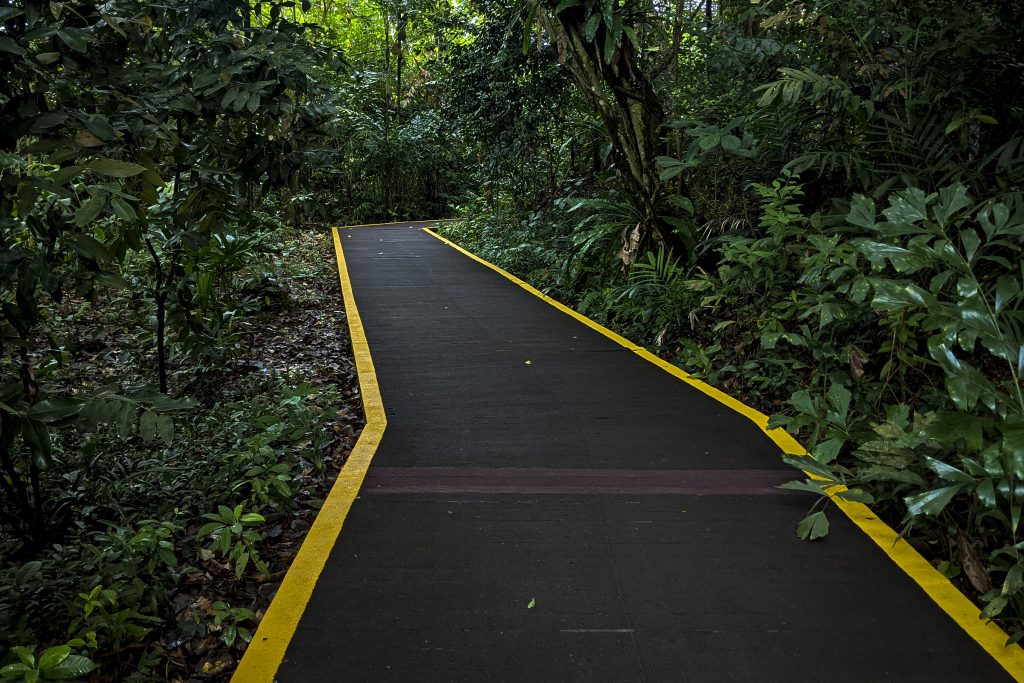
All things considered, Sungei Buloh is still a pleasant, family-friendly walk alongside nature. Suitable for all ages. Which is understandable given the aging local population.
That being said, there are still a few gems to be found. You still get the occasional monitor lizard crossing the road that shakes Singaporean children to the core. Or the bats we spot sleeping on the ceiling of a pavilion, much to the fascination of the bird-watching uncles with their mega cameras and tripods.
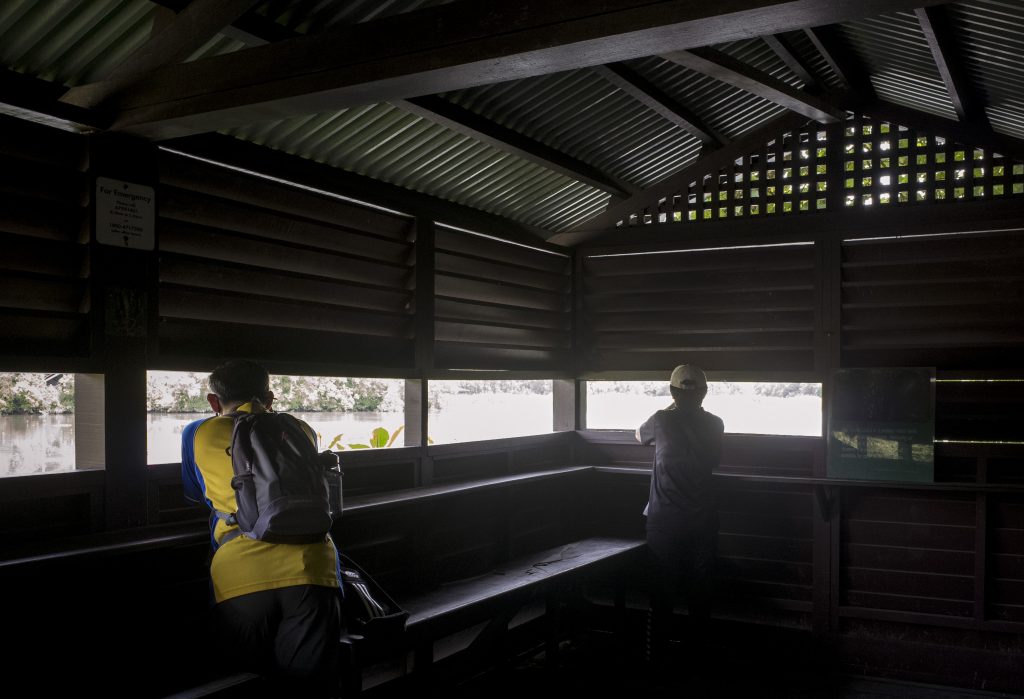
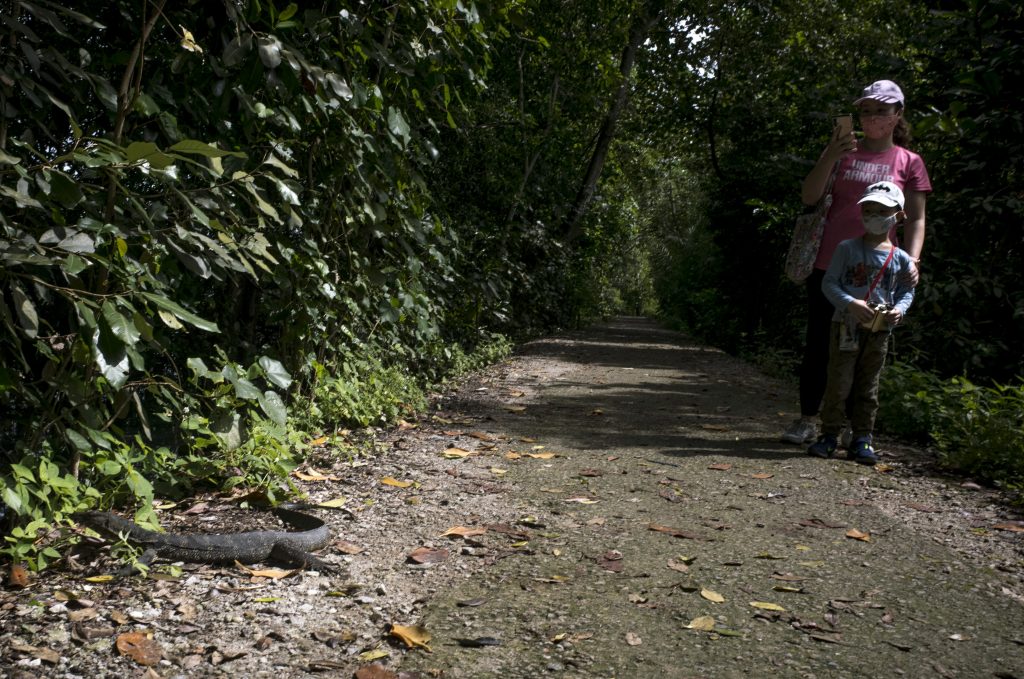
If you arrive early and slow down your footsteps, you might even spot other hidden wildlife that reflect Singapore’s amazing biodiversity: 170 species of birds, 54 species of butterflies and 33 species of dragonflies.
As for all the family-friendly conveniences and safeguards that NParks has thoughtfully put in: there are two prevailing schools of thought:
One school of thought wonders if letting children fall off 20-cm-high platforms might teach them a valuable lesson, thereby preventing them from plummeting off 200-meter platforms in the future.
The other school of thought sees a 20-cm platform as an unacceptable risk, essentially the danger equivalent of their child shooting up their first batch of heroin. And it would be the gahmen’s fault if a single hair gets damaged on their precious offspring’s head.
Hence, the yellow lines get painted and the 100m spaced shelters get built—as a hedge against Singaporean Karens (both male and female). Because how can dis b allow?
For all the flak that MOE and the Singaporean education system has gotten in recent years, I can say with some authority, as the son of two public school teachers in Taiwan, that Asian parenting shoulders some of the blame.
Oftentimes, the greatest obstacle to children getting a good education are parents who are unable to deal in reality, and thus, raise their children in accordance to their own delusions and fantasies.
Then they turn around and complain about how the education system doesn’t prepare their children for the harsh realities of life.
Can Singaporeans Truly Escape the Rat Race?
This year, I’ve noticed a small but growing contingent of Singaporeans who are starting to envy the freedom and simple life of the Country Mouse. They are tired of the rat race and living under the dominion of fat cats and elites in this city. But as city mice, they are also inextricably tied to the acronyms that make city life possible: PSLE, NS, BTO, HDB, CPF.
Some are looking for ways out. Others are looking to carve out alternate paths within this system.
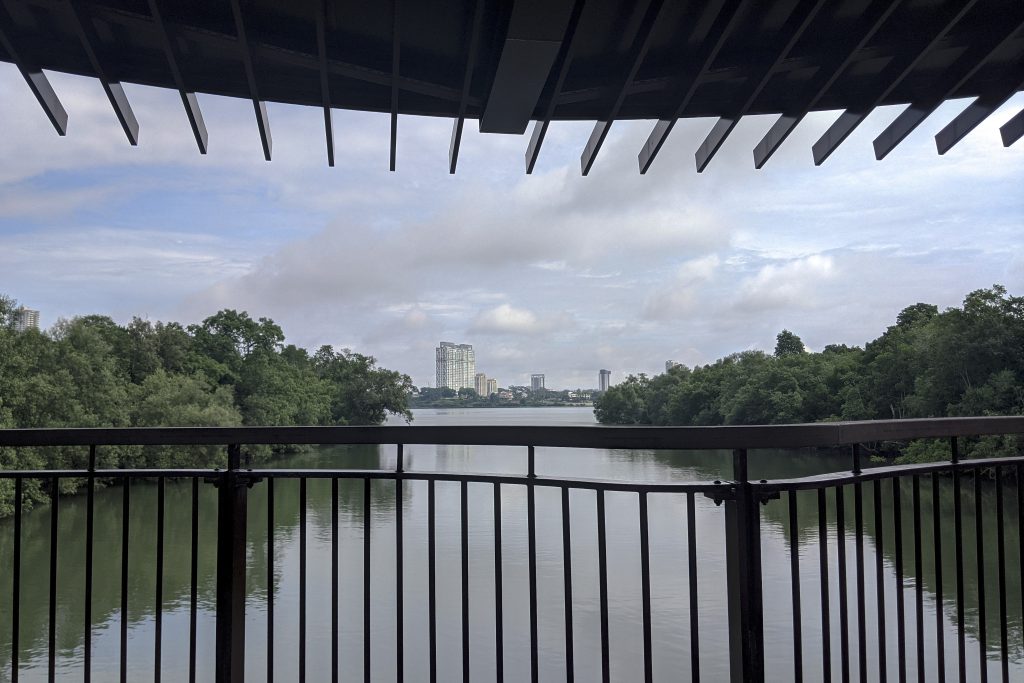
With travel still restricted by Covid, I set out to know whether ‘escape’ was truly possible in Kranji. Could Singaporeans go ‘off the grid’ to one of the last undeveloped stretches of land in Singapore?
The verdict? The marshlands of Kranji may have once been wild and untameable, but that hasn’t stopped Singaporeans from making their best efforts to tame it.
As Kranji grows in popularity and rich aunties-cum-real-estate-tycoons sink their speculative claws into Kranji’s soil, I worry that despite NPark’s best efforts at conservation through the gazetting of Core Conservation Areas, the Singaporean instinct for overengineering and de-risking every square inch of wildlife is going to turn the rest of Kranji into Disneyland. Less Untamed Jungle and more Garden City.
But these are the trade-offs that every society has to make. Singaporeans can’t escape the rat race if they’re also fully invested in the ideas that make the rat race possible. They can’t talk about meritocracy and innovation when everything from the education system down to the mentality of Asian parenting runs counter to those very goals.
And these tradeoffs are fine—so long as Singaporeans have a clear idea of what they’re trading in. If they go into this decision knowing all of their options, it’s perfectly okay for Singaporeans to decide that safety, comfort, and security should be prioritised over excitement, risk and volatility.
But shelter creates a sheltered people. Speaking from my own experience, the world beyond Singapore is not as dangerous or risky as some Singaporeans seem to think. While the United States currently resembles a clown car driving towards a cliff, it’s also not the only benchmark for a freer and more equitable way of life.
If Singaporeans truly want to escape the rat race, they first need to learn how to let go and slow down.
They need to muster up the courage to wander off the beaten path.
Looking to take the road less traveled? Write to us at community@ricemedia.co.



